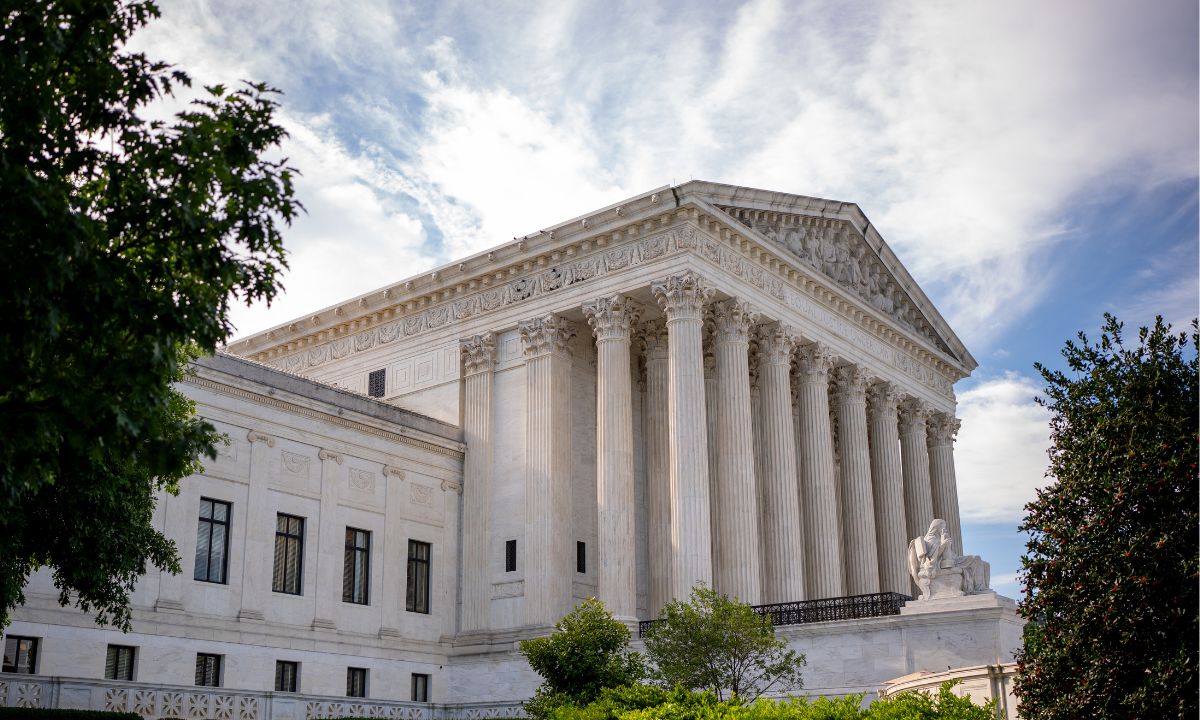SCOTUS to Rule in Case That Could Upend Enforcement of Disabled Students’ Rights
During contentious oral arguments, school district argues that families should have to prove school systems intended to deny children accommodations.

Get stories like this delivered straight to your inbox. Sign up for The 74 Newsletter
The U.S. Supreme Court heard arguments last week in a case that could prove seismic for students with disabilities who claim their schools have discriminated against them. If the family that brought the original lawsuit loses, cases filed under the Americans with Disabilities Act and Section 504 of the Rehabilitation Act — the portion of the law that governs many in-school accommodations — could become extraordinarily difficult to win.
A ruling in favor of Osseo Area Schools, located in suburban Minneapolis, would mean students who claim their rights were violated will have to prove their school systems acted in “bad faith or gross misjudgment” — a higher standard than “deliberate indifference,” which the law requires in other disability discrimination cases.
An estimated 1.5 million public school students receive disability accommodations under the ADA, ranging from modified academic materials — such as simplifying a text or supplying curriculum via a specialized device — to making classrooms, bathrooms and other school spaces accessible to wheelchair users and others. The law governs accessibility, while disabled children’s educational rights are guaranteed by a different measure, the Individuals with Disabilities in Education Act.
Teenager Ava Tharpe has a severe form of epilepsy that causes frequent seizures during the morning. While planning to move from Kentucky to Minnesota in 2015, when she was in fourth grade, her parents sought out a school district that would agree to start her classes at noon and extend them into the evening. After the family relocated, the district reneged, saying it was unwilling to provide services outside the normal school day.
When the Supreme Court accepted the case, the district’s position had consistently been that disability discrimination suits had to prove the school system acted out of ill intent. Osseo argued that the legal standard, which plaintiffs have been held to in some federal court circuits but not others, applied only to K-12 students.
But in the brief it submitted before the April 28 hearing, the district widened its argument, saying that a showing of bad faith is required in all ADA cases, not just those involving schools.
“The statutes do not impose liability for nondiscriminatory, good-faith denials of requested accommodations,” the document asserts, adding that the high court “should not subject America’s 100,000 public schools and countless other state and local entities and federal-funding recipients” to the deliberate indifference standard.
The hearing erupted in verbal fireworks after the district’s attorney accused the lawyers representing the federal government, which has sided with the family, of “lying” in saying that the district had shifted its argument. Justice Neil Gorsuch snapped back, and several minutes of heated debate ensued.
Later in the hearing, Justice Amy Coney Barrett characterized the district’s shift as “a pretty big sea change,” according to an account posted by SCOTUS Blog, which also reported Justice Ketanji Brown Jackson was “all but incredulous” that the district argued that the ADA does not necessarily require accommodations for people with disabilities.
Osseo officials declined to comment on the case, citing Tharpe’s right to privacy. “The school district educates nearly 21,000 students, including 3,000 students with disabilities who have the right to education from birth through age 22,” it said in a comment to The 74. “We’re committed to the principles and the ideals expressed by the Individuals with Disabilities Education Act.”
The Tharpe family initially filed a complaint with state education officials under the IDEA, which guarantees disabled pupils a “free and appropriate public education.” Noting that the girl had a right to a full school day, even if it extended into the evening, a state administrative law judge found that Ava’s educational rights had been violated.
When the district appealed that ruling in federal district court, the family filed a second suit under the ADA. In March 2024, the Eighth Circuit Court of Appeals agreed that the family’s IDEA rights had been violated. But the appellate court rejected the ADA discrimination claim, ruling the Tharpes had not proven the district acted in bad faith.
The Supreme Court’s eventual ruling should not impact IDEA, which governs whether children with disabilities are entitled to special education services enabling them to make adequate progress toward their goals.
By contrast, the ADA requires equal access to school and an equal opportunity to learn once they are there, explains Ellen Saideman, one of the authors of a friend of the court brief submitted by the Council of Parent Advocates and Attorneys and several other disability advocacy groups. They argue that a ruling in the district’s favor would unfairly subject schoolchildren to a much higher legal bar than other people who need accommodations.
To illustrate the difference, she cites a 2004 ADA case, Tennessee vs. Lane, brought by someone who had to crawl up the stairs to get into a Tennessee courthouse that didn’t have an elevator. Under the “gross misjudgment” standard, there wouldn’t be a claim.
“The building was built before the ADA was passed, so it wasn’t built with any discriminatory intent,” says Saideman. “Under deliberate indifference, they know a person has a disability and there are other people who have disabilities who can’t go up the stairs. If they don’t fix it, then there could be a claim.”
One of the ADA’s original drafters, former Rep. Tony Coelho of California, also submitted a brief arguing that Congress’ intent was that families of disabled children have “the same rights, no more, no less, that are provided all other groups … including the right to seek relief under Section 504 [and] the ADA.”
A decision is expected in June or July, near the end of the court’s current term.
Get stories like these delivered straight to your inbox. Sign up for The 74 Newsletter

;)
